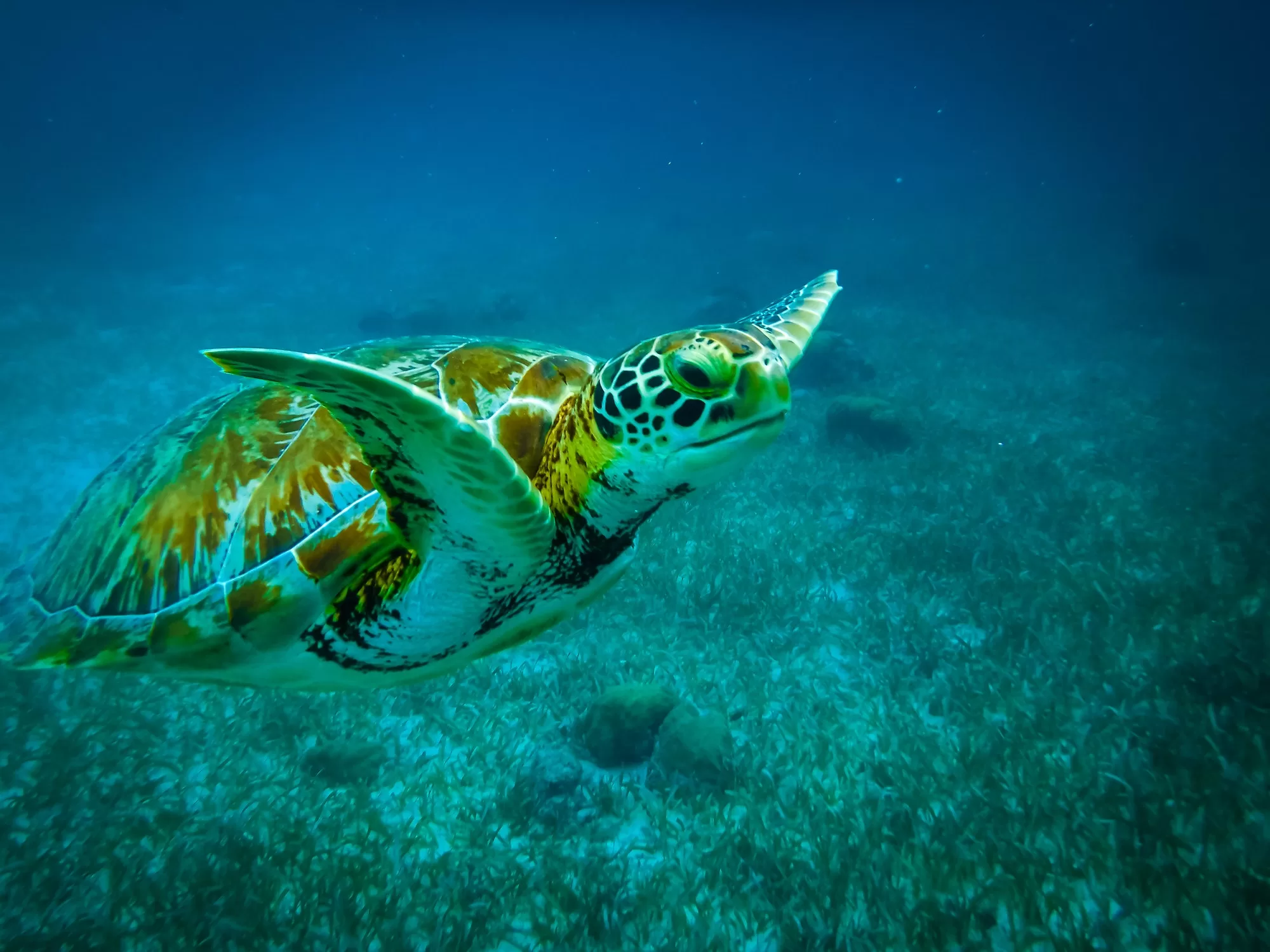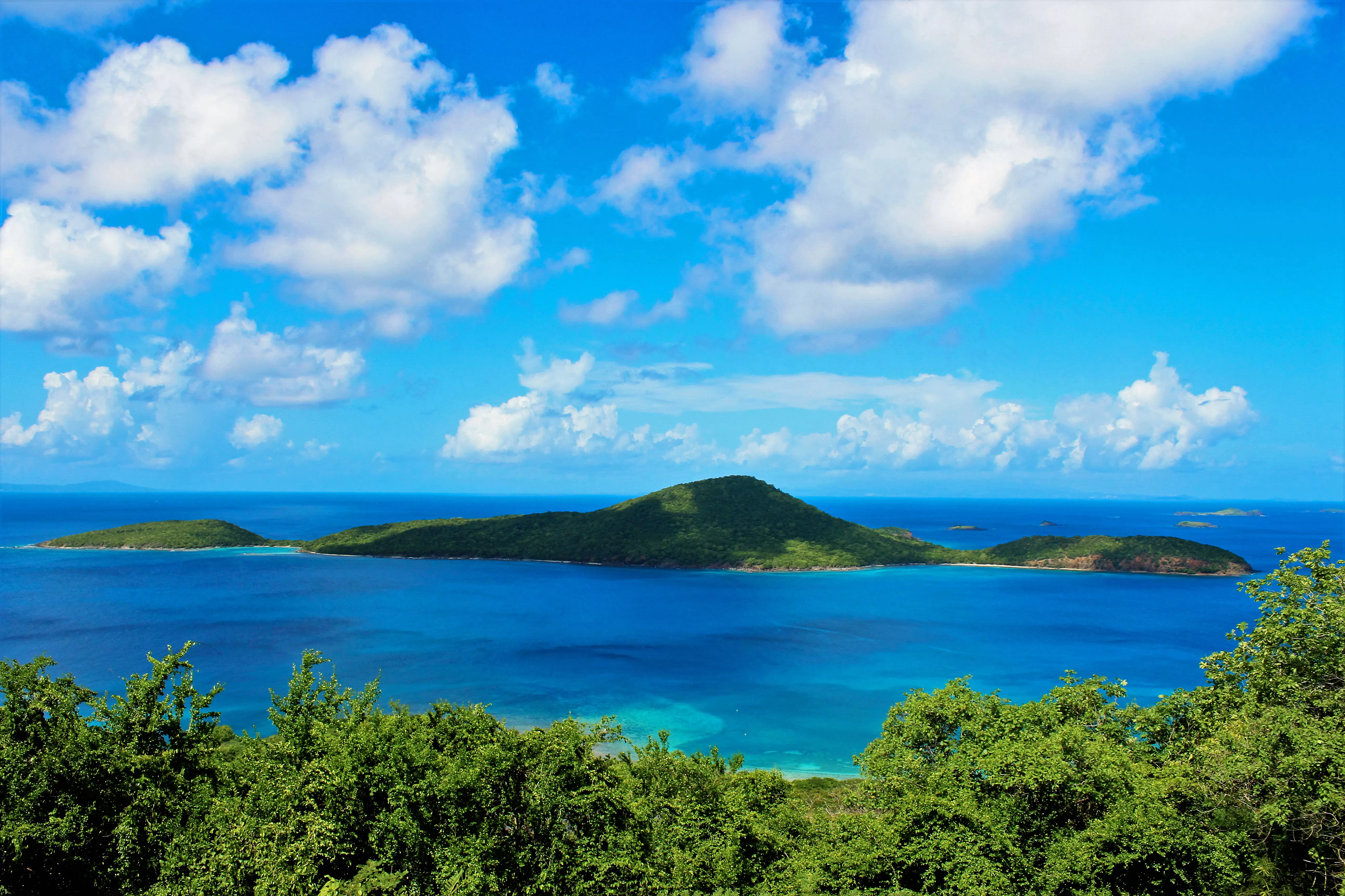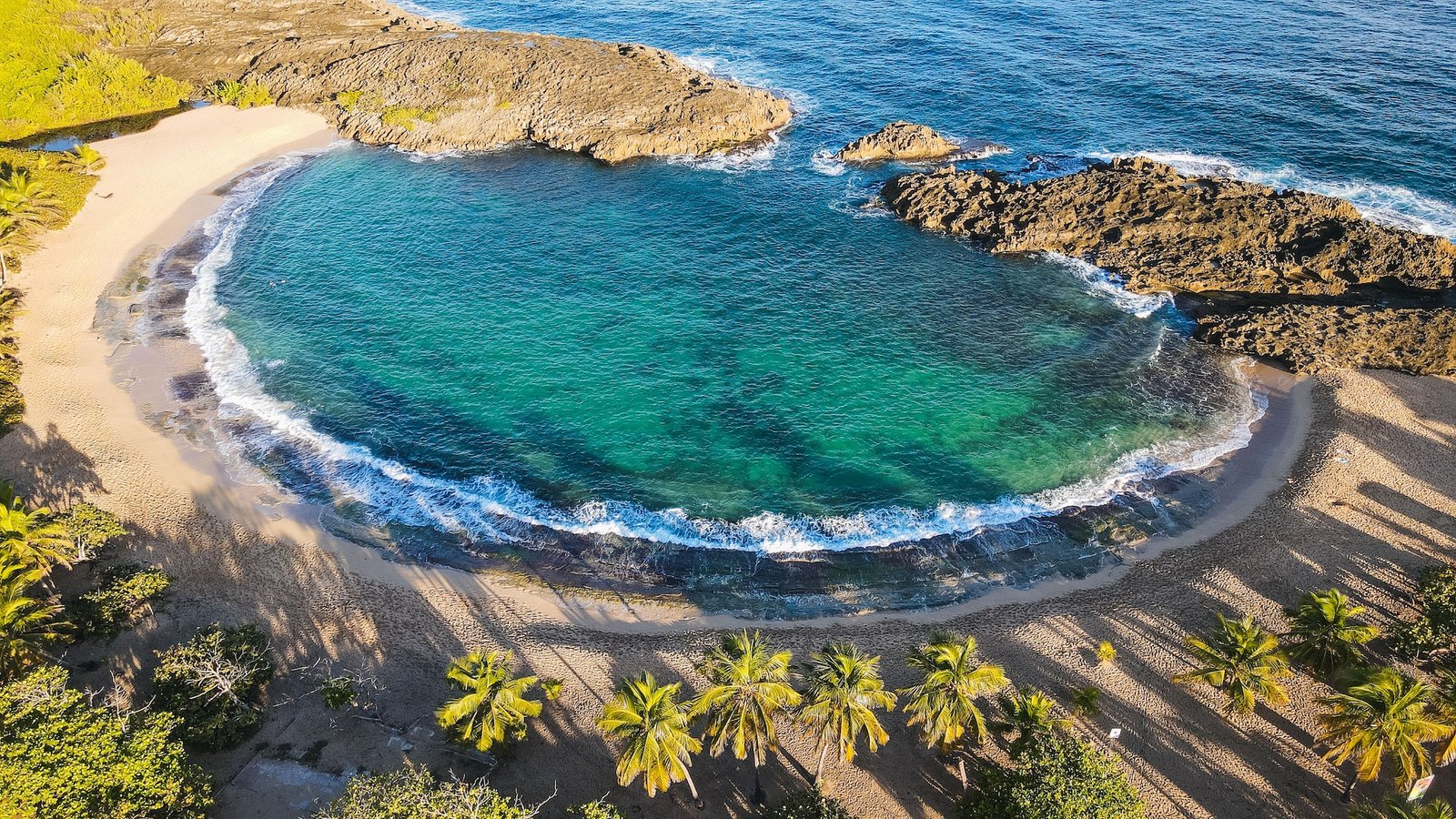Introduction
Hey fellow adventurers! Have you ever dreamed of exploring an underwater world that seems almost otherworldly? Well, let me take you on a journey to one of the most mesmerizing dive sites on the planet – the Great Blue Hole in Belize. This massive underwater sinkhole has long captivated the imagination of scuba divers from around the globe with its mysterious depths and unique marine life. It’s not just a dive; it’s a plunge into a prehistoric world, a leap into the unknown. So, pack your gear, and let’s dive into what makes the Great Blue Hole a bucket-list destination for every diving enthusiast!
The Allure of the Great Blue Hole
The Mystery Beneath the Waves
Imagine a giant circular chasm, deep and dark, etched into the ocean floor. That’s the Great Blue Hole for you – a massive submarine sinkhole off the coast of Belize. But how did this marvel come to be? Let’s rewind the clock back to the last Ice Age. Originally a limestone cave, the Great Blue Hole was formed when rising ocean levels flooded the caverns, leading to the collapse of its roof and the creation of this natural wonder.
An Unparalleled Underwater Adventure
Diving into the Great Blue Hole is like stepping into a time capsule. The stalactites and stalagmites that you’ll find here are striking reminders of its ancient past. But it’s not just the geology that’s awe-inspiring. The Great Blue Hole is part of the larger Belize Barrier Reef Reserve System, a UNESCO World Heritage Site, and boasts a rich and diverse marine ecosystem. As you descend into the abyss, you’ll be greeted by a variety of marine life, including giant groupers, nurse sharks, and maybe even the elusive Caribbean reef shark.
Capturing the World’s Imagination
This mystical dive site has not only attracted divers but also caught the attention of legendary explorers and marine researchers. Did you know that in 1971, Jacques Cousteau, the famed oceanographer, declared the Great Blue Hole one of the top ten scuba diving sites in the world? He navigated his ship, the Calypso, into the hole to chart its depths, further popularizing this dive site on the world stage. Today, it continues to be a focal point for marine research and a symbol of nature’s grandeur.
Stay tuned for the next section where I’ll guide you through preparing for your own dive into the Great Blue Hole – ensuring you’re fully equipped to experience this underwater spectacle safely and memorably.
Preparing for Your Dive
Gearing Up for the Adventure of a Lifetime
Before you can experience the thrill of descending into the Great Blue Hole, there’s some essential preparation to be done. Trust me, a little planning goes a long way in making your dive an unforgettable experience!
Qualifications and Experience: Are You Ready?
The Great Blue Hole isn’t your average dive site. Due to its depth and unique conditions, it’s recommended for experienced divers. Most dive operators will require you to have an Advanced Open Water certification or equivalent. It’s also a good idea to have a few logged dives under your belt before you take the plunge. If you’re not quite there yet, don’t worry! Belize offers plenty of less challenging (but equally stunning) dive sites where you can hone your skills.
Choosing the Right Dive Operator: Your Gateway to the Blue Hole
Belize is dotted with dive shops and tour operators, but it’s crucial to pick one that ensures both a great experience and your safety. Look for operators with certified and experienced guides who are familiar with the Blue Hole’s unique environment. Check online reviews, ask for recommendations from fellow divers, and don’t hesitate to ask operators about their safety records and equipment. Remember, the cheapest option isn’t always the best when it comes to diving.
Safety First: Dive Planning and Briefing
On the day of your dive, pay close attention to the dive briefing. Your guide will cover important aspects like dive signals, buddy system protocols, depth and time limits, and emergency procedures. Listen carefully and ask questions if anything is unclear. Also, make sure your dive gear is in good condition, and don’t forget to check your air supply!
Environmental Consciousness: Protecting the Blue Hole
As divers, we have a responsibility to protect the underwater environments we explore. Be mindful of your buoyancy to avoid damaging the delicate coral and rock formations. Remember, take only photos and leave only bubbles!
By following these guidelines, you’re setting yourself up for a successful and awe-inspiring dive in the Great Blue Hole. Up next, I’ll take you through what it’s actually like to dive into this incredible underwater sinkhole, and the wonders that await beneath the surface.
The Diving Experience
Descend into the Deep Blue Mystery
Now, let’s dive into the heart of your adventure. The moment you’ve been gearing up for – descending into the enigmatic Great Blue Hole.
Embarking on the Journey Downward
Your dive begins with the surreal experience of descending into a vast, blue void. The water is initially clear and inviting, allowing you to see the full circumference of the hole. As you go deeper, the light begins to fade, and the true magic of the Blue Hole starts to unfold. It’s an eerie yet captivating sensation, like stepping into a different world.
Encountering the Past: Geology and Marine Life
One of the most striking features you’ll encounter are the massive stalactites and stalagmites, some as long as 40 feet. These geological giants are a silent testament to the hole’s ancient past as a dry cave system. Swimming among these formations is a humbling experience, reminding us of the slow but powerful march of time.
As for marine life, while the Great Blue Hole isn’t teeming with the vibrant fish populations found in shallower reefs, its inhabitants are no less fascinating. You might spot Caribbean reef sharks patrolling the depths, along with the occasional hammerhead. Groupers and barracudas are also common sights, adding to the sense of awe.
The Mystique of the Deep: A Personal Reflection
Every diver’s experience in the Great Blue Hole is unique. Some describe a feeling of serenity, others a sense of thrill. As you float in this colossal underwater cavern, take a moment to absorb the experience. The silence, the scale, the history – it’s a moment that stays with you long after you’ve surfaced.
In the next section, we’ll talk about the challenges and considerations of diving in the Great Blue Hole. It’s not just about the excitement; it’s also about respecting and understanding the power and fragility of this natural wonder. Stay tuned for tips on how to make your dive not only memorable but also responsible and safe.
Challenges and Considerations
Diving Deep into Responsibility and Awareness
The Great Blue Hole offers an extraordinary experience, but with it comes a set of challenges and responsibilities. Let’s dive into what you need to consider to make your adventure not only exhilarating but also safe and respectful towards the environment.
Understanding the Risks: Navigating Potential Difficulties
Depth and nitrogen narcosis are significant considerations when diving the Great Blue Hole. At around 130 feet, the effects of nitrogen narcosis can be disorienting. It’s essential to stay aware of your depth and to closely monitor your air supply and no-decompression limits. Always stay within the bounds of your training and experience, and remember, there’s no shame in turning back if you feel uncomfortable.
Environmental Impact: Our Duty to Protect
The Great Blue Hole is a fragile ecosystem. As divers, we must minimize our impact. This means maintaining good buoyancy control to avoid damaging the ancient stalactites and the walls of the hole. Be vigilant about not touching or taking anything from the dive site. Remember, we’re just visitors in this underwater realm.
Staying Safe: Tips for a Responsible Dive
- Buddy System: Always dive with a buddy and keep an eye on each other.
- Dive Plan: Stick to your dive plan and the guidelines provided by your dive operator.
- Check Your Gear: Make sure all your equipment is functioning correctly before the dive.
- Know Your Limits: Don’t push beyond your comfort zone or training.
- Environmental Consciousness: Be aware of your surroundings and the impact of your actions.
The Importance of Conservation Efforts
The Great Blue Hole, like many natural wonders, faces environmental challenges. It’s important to support conservation efforts and choose eco-friendly dive operators. By doing so, you contribute to preserving this site for future generations.
In the next section, we’ll explore beyond the Blue Hole to other incredible dive sites in Belize. Each offers its own unique experience, contributing to Belize’s reputation as a premier diving destination. Stay tuned for more underwater adventures!
Beyond the Blue Hole: Other Dive Sites in Belize
Discovering Belize’s Underwater Treasures
While the Great Blue Hole is the crown jewel of Belize’s diving sites, the country’s waters are filled with other spectacular spots that are just waiting to be explored.
Turneffe Atoll: A Diver’s Paradise
Just a short boat ride from the Great Blue Hole lies Turneffe Atoll, one of the largest atolls in Belize. This site is renowned for its abundant marine life, pristine coral reefs, and crystal-clear waters. Diving here, you’ll be greeted by schools of colorful fish, sea turtles, and even playful dolphins.
Glover’s Reef Atoll: Unspoiled Beauty
Glover’s Reef, another remarkable atoll, offers a more remote and unspoiled diving experience. It’s part of a UNESCO World Heritage Site and is known for its biodiversity. The walls and pinnacles here are teeming with life, offering divers a chance to see everything from tiny, vibrant reef fish to majestic manta rays.
Lighthouse Reef: Home of the Half Moon Caye
Lighthouse Reef, another nearby atoll, is famous for Half Moon Caye and its stunning wall dives. The vertical drop-offs and healthy coral gardens create a mesmerizing backdrop for encounters with large pelagic fish and an array of reef sharks.
Comparing the Blue Hole with Other Belizean Dive Sites
While the Great Blue Hole is unique for its deep cavern dive, the other Belizean sites offer more in terms of colorful coral reefs and diverse marine life. Each site has its own charm and character, making Belize a versatile and exciting destination for divers of all levels.
Practical Information for Travelers
Making the Most of Your Belize Dive Trip
To ensure your dive trip to Belize is as enjoyable and hassle-free as possible, here are some practical tips and information.
Best Time to Dive
The best time to dive in Belize is during the dry season, from November to May. During these months, the seas are calmer, and the visibility is at its best, making it ideal for diving.
Accommodations and Travel Tips
Belize offers a range of accommodations, from luxury resorts to budget-friendly guesthouses. For a truly immersive experience, consider staying at a dive resort near the Great Blue Hole. Also, don’t forget to enjoy the local cuisine and immerse yourself in the vibrant culture of Belize.
Conclusion
From the depths of the Great Blue Hole to the vibrant reefs of Turneffe Atoll, Belize is a diver’s dream. It offers a unique blend of adventure, serenity, and natural beauty. As you plan your trip, remember to dive responsibly, respecting the underwater world that continues to fascinate and inspire us.
Happy diving, and see you beneath the waves in Belize!




